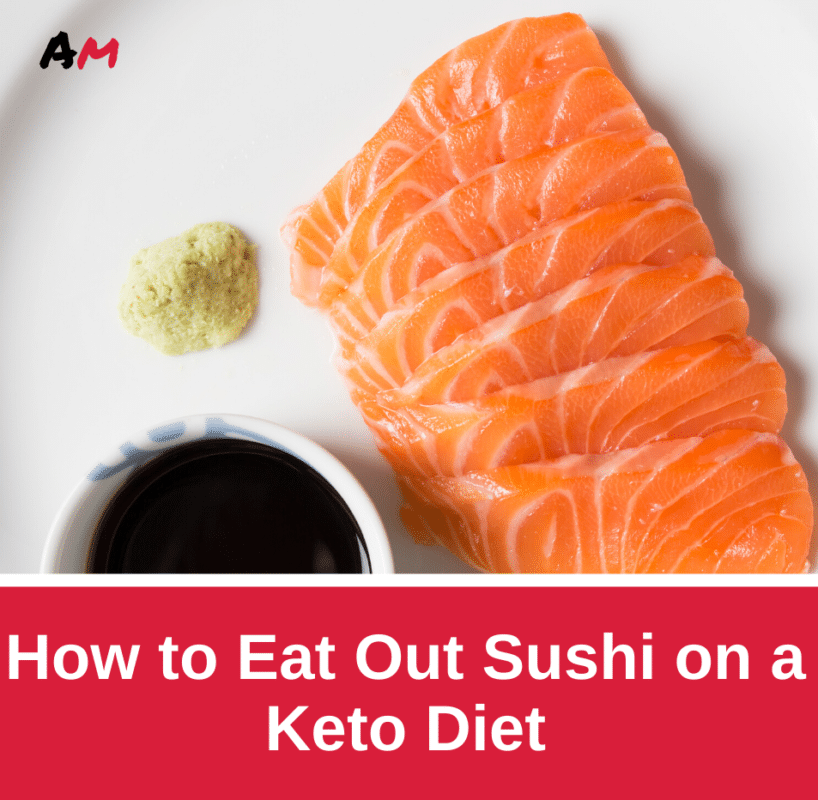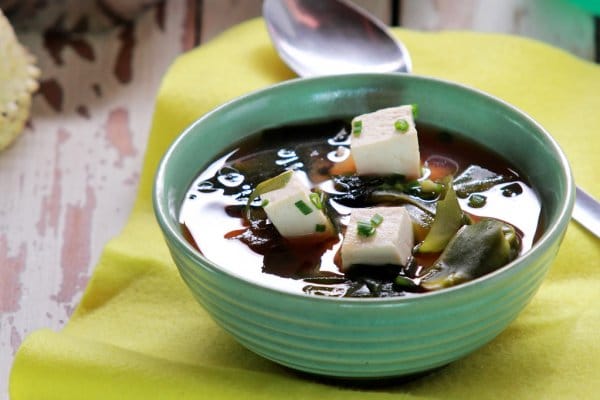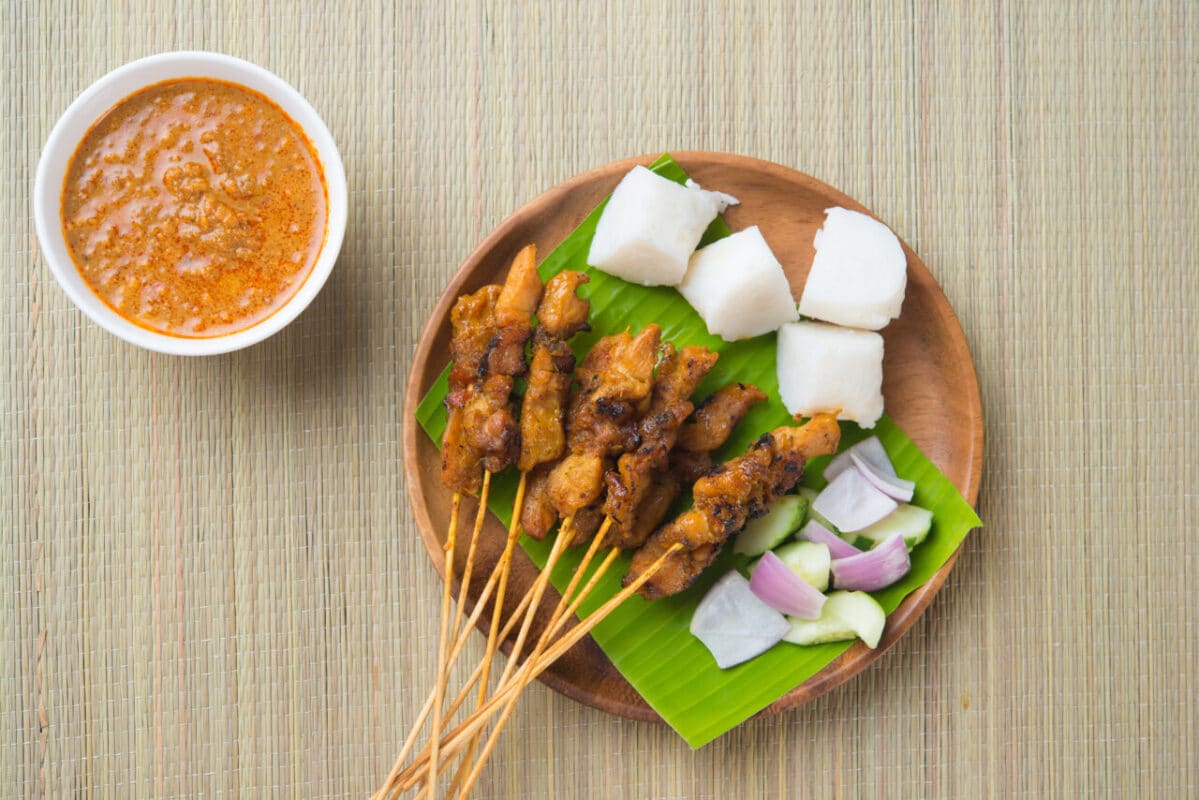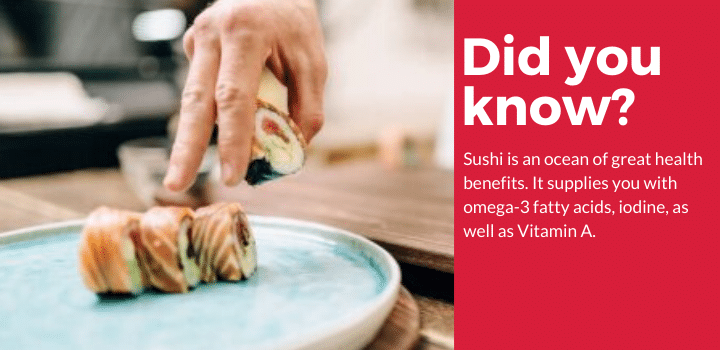Have you been craving sushi but you are worried that it might ruin your keto diet?
Then you’re in the right spot!
In this Athletic Muscle guide, I’ll be covering:
- What can I eat on a Keto diet?
- What are the foods to avoid?
- And my tips in ordering sushi!

Sushi is one of the world’s great loves. It makes a great “healthy” alternative to other ready made foods.
It is a relatively good source of protein and packed full of nutrients, minerals and, in some cases, health boosting fats.
However, it seems many ketogenic dieters feel like it is off the menu. But why?
The first concern that comes to mind is when one thinks sushi, there is rice, of course. And if it isn’t rice, then the next concern might be in the form of the fairly carbohydrate laden sauces and/or the batters.
Fret not, sushi loving keto fans. There are a range of alternatives you can go for and or changes you can make to recipes to fit your keto-friendly sushi without worrying about ruining your ketosis.
What Sushi Can I Eat on Keto Diet?
First and foremost, any and every food you “can” eat on a keto diet is going to be minimal to zero carb.
So, when it comes to sushi, what does that look like?
Many of the traditional options, not accounting for changes in recipes, are carb rich, although, there are a number of options you can go for to enjoy sushi guilt-free.
Read More : Keto Diet Food List: A Complete List of What You Can Eat and What To Avoid
Appetizers
Miso soup is an option, a clear broth, rooted in Japanese cooking tradition, it is flavoured with fermented soybean paste and filled with keto-friendly vegetables like cabbage, mushrooms, and onions.
Occasionally, it will also be served with tofu (an extra serving of protein) and can be light, which is ideal for the next course.
It can also be more satiating (depending on serving size) if you wish to use it as a core part of the meal alongside some sushi.

Miso soup

Oshinko
Oshinko is a great option, not just for keto-ers, but also for those looking for a more traditional experience.
Oshinko is thinly sliced, pickled vegetables (typically cucumber, radish with some restaurants even offering lotus root) which are delicious, but also highly nutritious.
Seaweed is a highly nutritious veggie option, which often comes with finely sliced avocado and pine nuts. Extremely tasty and relatively keto friendly.
Be wary however, along with soy sauce, unique spices and seeds, some salads will be laden in added sugar and or ginger juice.
Ask in advance when ordering to ensure the salad won’t compromise your diet.
Sushi restaurant menus are expanding and some have adopted satay on their appetizer menu.
Read Also: Keto Mojo Review – A Different Approach To Ketone Levels Testing
Satay is naturally low in carb (typically grilled chicken, steak, or lamb) however, also be wary when ordering; ask if there is added sauce as traditionally these will be sweet and rich in carbohydrates.
Most restaurants will be happy to serve satay without the sauce.

chicken satay
Read Also: How To Overcome The Keto Weight Loss Plateau – A Comprehensive Guide
Main Dish
Sashimi is the natural option for keto dieters. Sashimi is thinly sliced raw fish, a great source of protein and health boosting fats (especially salmon options) which are delicious when enjoyed along with some soy sauce.

Sashimi is typically the highest quality cuts of fish; imperfections cannot be hidden and Japanese sushi chefs traditionally take a lot of pride in producing beautiful sashimi.
Read Also: What are the 5 Best Keto Multivitamins for your Diet?
Most servings of sashimi will have trace amounts of carbs and are virtually universally found in any sushi establishment.
Usually, a side serving of oshinko to compliment the dish is provided; a very “safe” main option for keto dieters.

Other options
Negimaki is awesome. It’s a thinly sliced cut of beef most often served wrapped around green onions or asparagus and with a side of soy sauce for dipping.
It may be served as an appetizer, but is a wonderful option for a main meal. Not only is it insanely tasty but also packed with protein and other health supporting nutrients and minerals!
Edamame, these little greens appear very frequently on sushi restaurant menus and while they may not be a main dish in of themselves, may make a nice accompaniment to one of the aforementioned options.
Be cautious when it comes to edamame; they can pack quite the carb punch and may throw off your diet if you go overboard on the beans. Stick to a one-half to one serving to keep under 10g of carbs (approximately 8-9g carbs per serving).
Read Also: The 5 Best Frozen Meal Delivery Services – 2020 Review
What are the Foods to Avoid?
There are clearly a range of options to choose from that will help with adherence to dietary practices, but there are also options you want to avoid if your aim is to remain in ketosis.
The two most popular iterations of sushi rolls: Nori rolls and Ngiri rolls are extremely carb rich and definitely options to avoid on a ketogenic diet.
Nori are the traditional sushi rolls with an external seaweed wrap, rice filling and then a variety of fillings. Tempura nori rolls are are not for most for keto dieters as, not only are they packed with rice, but also deep fried in carb dense batter.
Of note, avoid basically anything from the tempura options; these are all going to be carb dense (because of the batter) and are also typically served with sticky, sugar rich sauces.
Ngiri are typically thinly sliced cuts of fish / meet served on a bed of rice. Although delicious, they are most definitely not keto-friendly. They are lower in carbs when compared to Nori rolls, in excess of 10g of carbs per each roll.
Not traditional, but some sushi restaurants also stock and serve certain varieties of ramen. It is recommended to skip on this as ramen comes with a large serving of noodles.
Some even come with “fake crab meat”, which is typically crab meat topped up with other cuts of fish. This sounds great for keto, but this “crab meat” typically has added in thickeners like wheat and is cured with sugar. Definitely not keto friendly.
Read Also: Calisthenics For Women – Workouts, Routines, And More
What to order at sushi restaurant on Keto?
- Avoid the sticky sauce options; stick with soy and/or no sauce where you can. Ask what kind of sauce comes with your meal (teriyaki is traditionally rich in added sugars).
- Stick to grilled meat options and or sashimi.
- Avoid any options which contain crab meat.
- Ask for riceless roll options (and enquire further for what is used in its place).
- Avoid ramen options if they’re on the menu.
- Be cautious when ordering seaweed salad for an appetizer. Sticking with miso soup and or oshinko are more keto-friendly options.
Conclusion
Sushi fans rejoice! There is a range of options to choose from and “at home” recipes which allow for alternative, favourite sushi options.
Many might shy away from the rice riddled menus they’re accustomed too, but many of the options on sushi restaurant menus are not only completely keto friendly, but also wonderfully nutritious and tasty.
Try some sashimi or negimaki next time you visit a restaurant. Maybe even expand your palate a bit further with some miso soup and oshinko.

